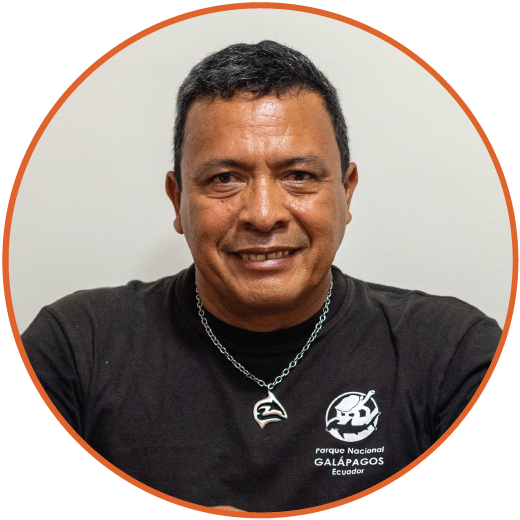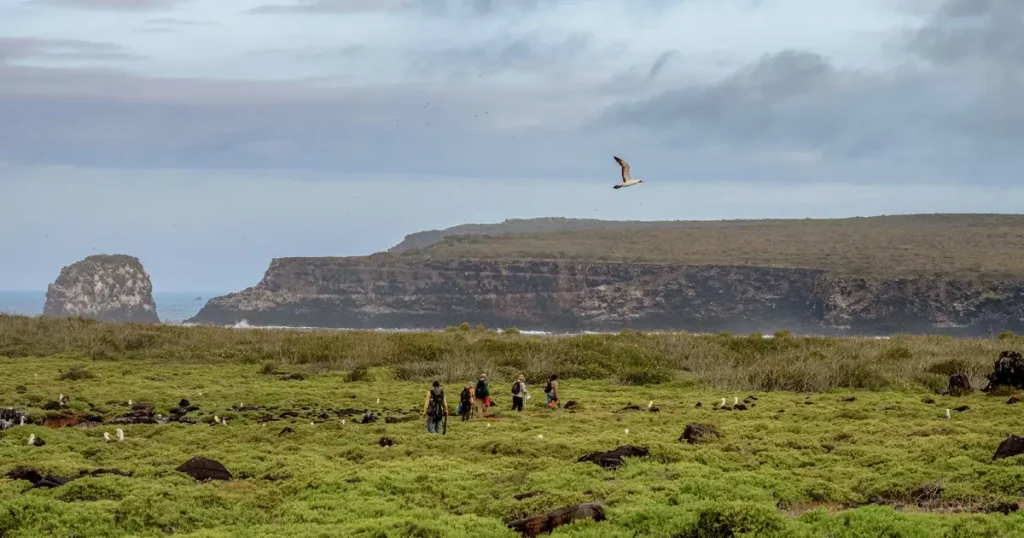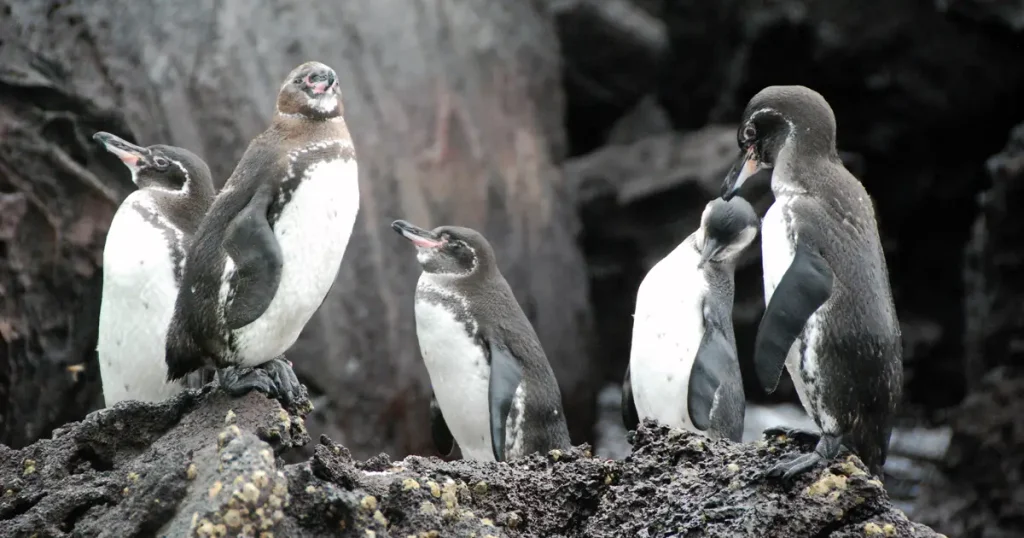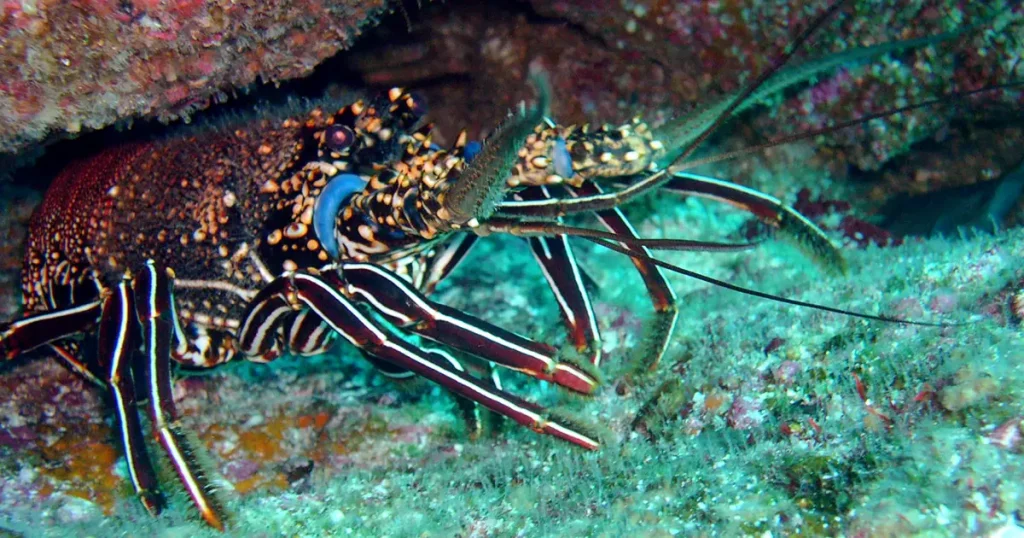Where Sharks Still Swim Free, Life Finds a Refuge
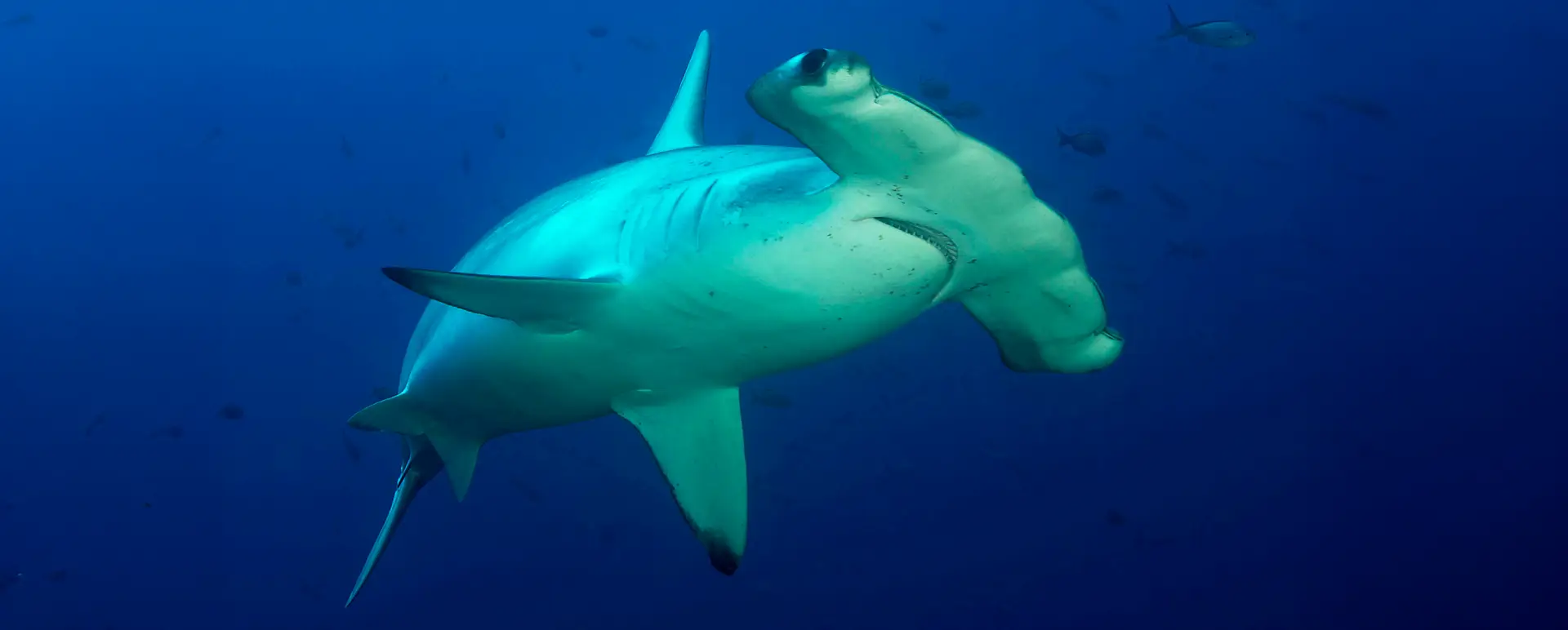
With over 30 shark species recorded, Galápagos is a critical sanctuary for sharks in the Pacific. Galápagos Conservancy supports research and conservation efforts during key moments in shark life cycles, helping preserve sharks’ essential role in keeping the ocean in balance.
In a world where shark populations are declining, Galápagos remains one of the few places sharks can still swim freely. In these remote Pacific waters, migratory routes, nursery grounds, and gathering sites combine to support a fragile yet essential web of marine life.. Over 30 shark species—including iconic ones like the hammerhead, whale shark, blacktip, and Galápagos shark—find not only shelter and food, but a real chance at survival.
A Wake-Up Call That Changed Everything
In 2017, the world was shocked by a grim discovery. An industrial fishing vessel, the Fu Yuan Yu Leng 999, was intercepted inside the Galápagos Marine Reserve carrying over 6,000 dead sharks. Of these, 64% were females and 89% were juveniles—a devastating blow to populations.
It was a sobering reminder: declaring marine protected areas isn’t enough. Protecting them requires research, monitoring, vigilance, and constant action.
Since that incident, Galápagos Conservancy has deepened its commitment to defending these marine sanctuaries and the species they support. Because protecting sharks isn’t just about saving individual species—it’s about safeguarding the entire ocean.
In 2022, Ecuador established the Hermandad Marine Reserve, adding 23,000 square miles to the existing 74,500 square miles of the Galápagos Marine Reserve, strengthening migratory corridors vital for shark survival.
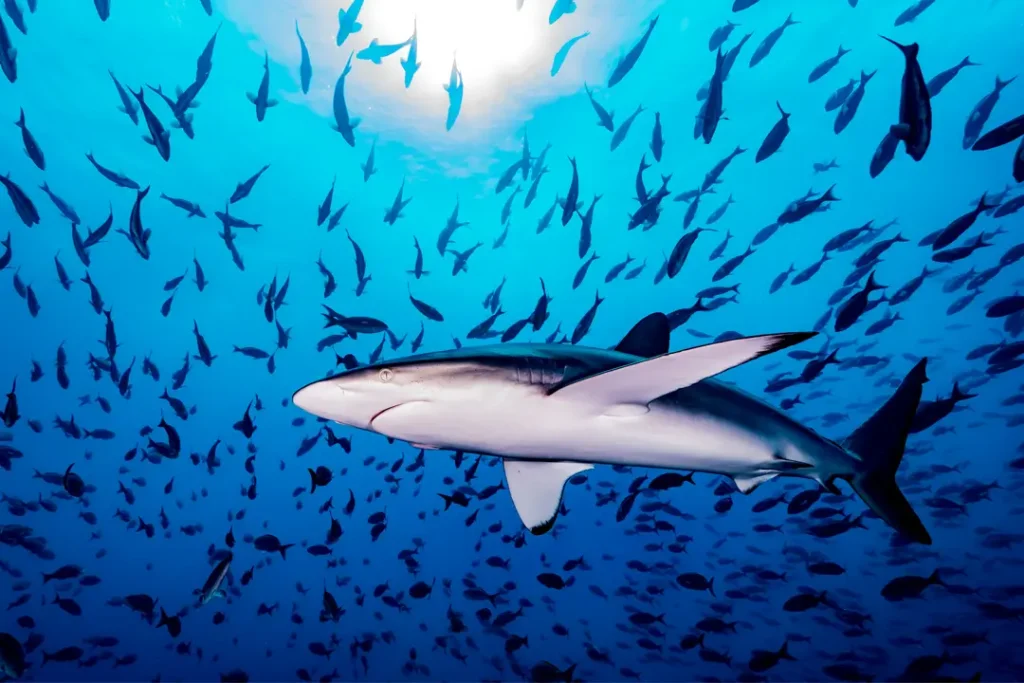
These milestones were only possible thanks to science, education, and ongoing collaboration between institutions working to protect sharks. For sharks to continue swimming in Galápagos, protection must happen every day, from every angle.
From the Coast to the Deep
In certain calm bays around Galápagos—shallow, quiet waters—something remarkable happens. Young sharks find shelter here to grow before venturing into the open ocean. Yet for a long time, we knew little about how many arrived, how long they stayed, or how vulnerable they really were.
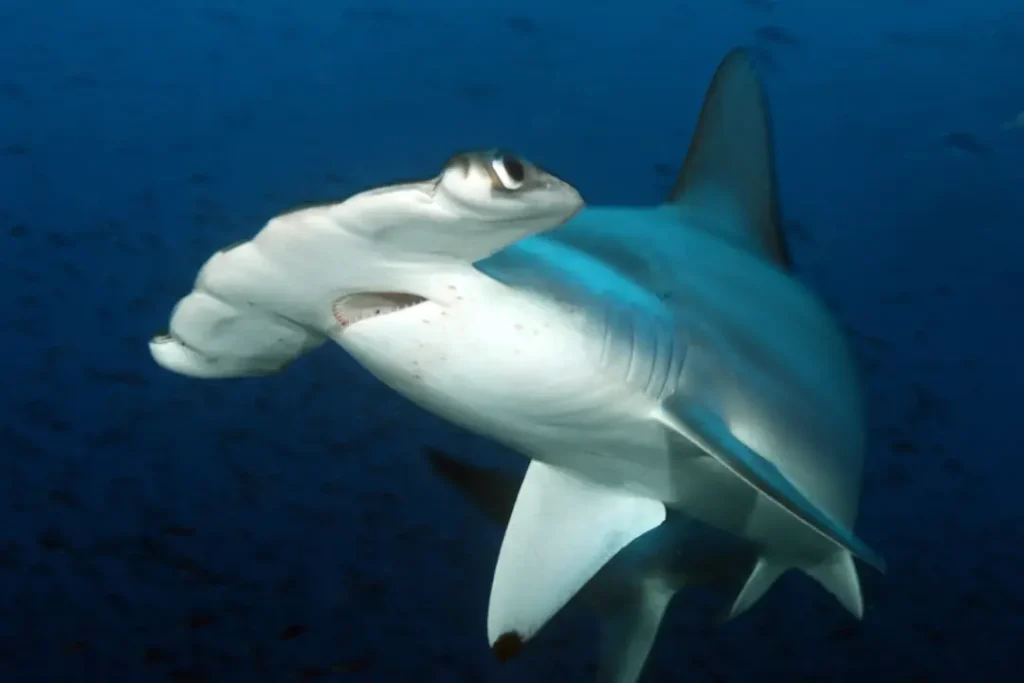
Since 2022, Galápagos Conservancy has partnered with the Galápagos National Park Directorate on a monitoring program to answer those questions. Using advanced technology, more than a dozen key nursery bays have been identified across Santa Cruz, San Cristóbal, and Isabela Islands. In the program’s first year alone, 385 juvenile sharks were tracked—many of them hammerheads and blacktips—revealing that these sharks spend up to two years in these bays before heading offshore.
Thanks to this data, we now know where protection is most needed, when these sharks are most vulnerable, and how to help more of them reach adulthood.
Beyond the Shore
As we look further offshore, the numbers become even more striking. In the far north of the archipelago, Darwin and Wolf Islands hold one of the highest shark concentrations on Earth—with more than 17 tons of marine biomass per hectare, most of it made up of sharks.
In even deeper waters, whale sharks—the largest fish in the world—also rely on Galápagos as a vital part of their life cycle. Research supported by Galápagos Conservancy revealed that 99% of the whale sharks passing through the region are adult females, many of them pregnant. These findings suggest Galápagos waters may serve as a reproductive corridor for this iconic species.
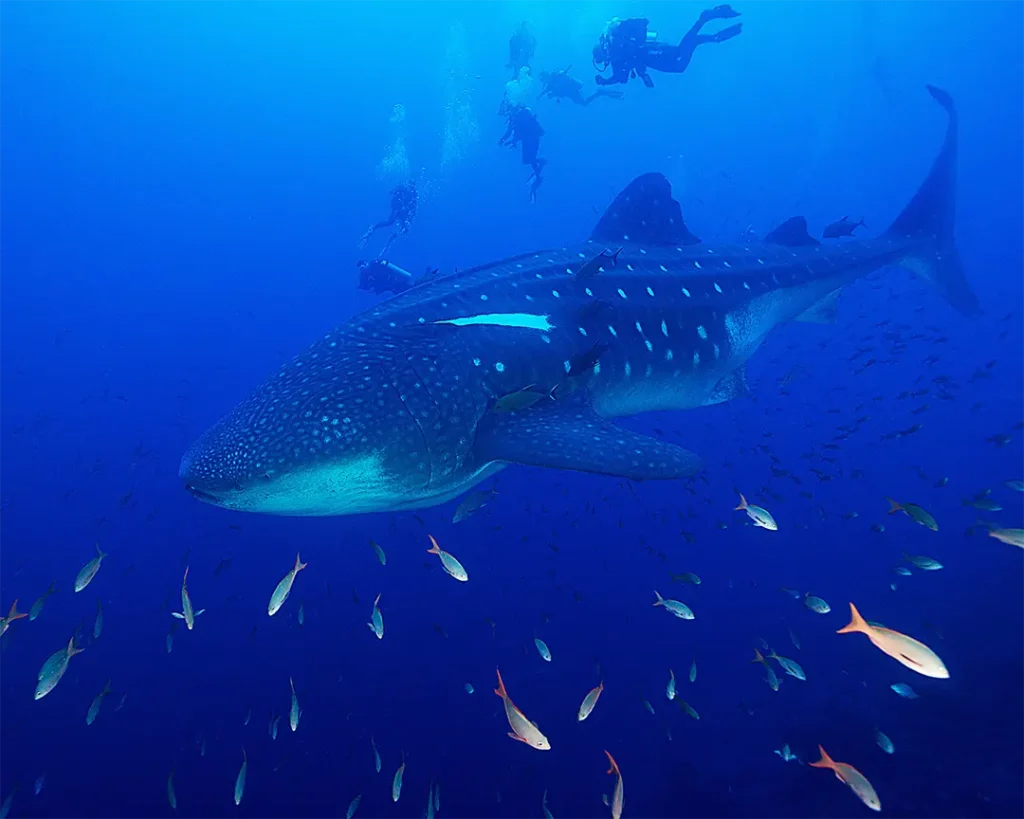
A Real Refuge, a Global Opportunity
Sharks regulate species balance and help keep marine ecosystems healthy. Without them, populations of smaller fish explode, coral reefs decline, food chains unravel, and marine biodiversity declines. In other words, the ocean stops functioning as it should.
Since 1970, overfishing, illegal trafficking, and climate change have caused global shark populations to drop by more than 50%. But in Galápagos, there is still hope.
Thanks to the creation of marine reserves, constant monitoring, and joint efforts from scientists, communities, and institutions, this archipelago remains one of the world’s most important refuges for key species like the scalloped hammerhead, whale shark, blacktip shark, and Galápagos shark.
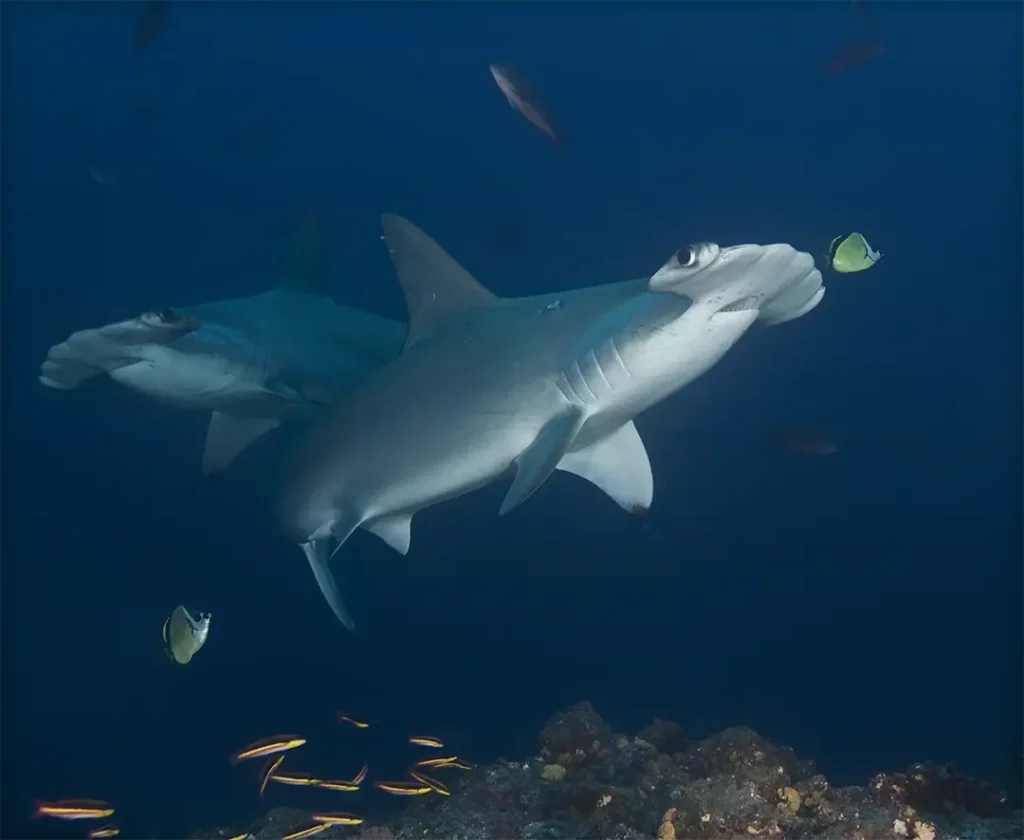
You Can Help Too
This Shark Week, we invite you to join the effort. Protecting these giants of the sea means defending the heart of the ocean. Galápagos has shown it’s possible. These sanctuaries still exist because of people who care, act, and protect. Conservation isn’t just about saving species—it’s about protecting life itself.
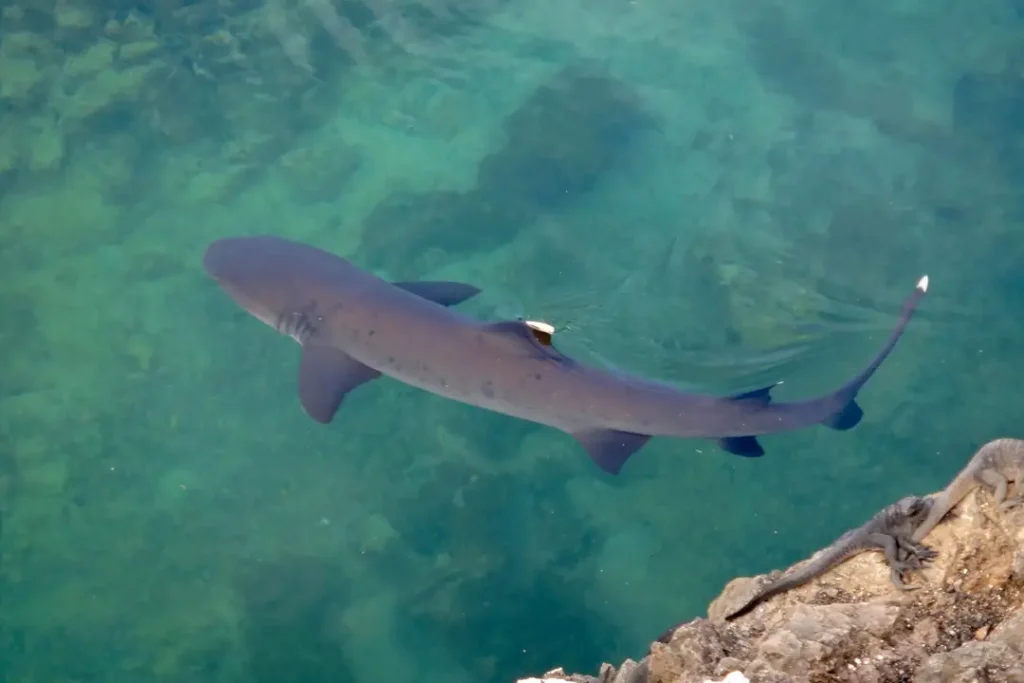
Want to Learn more and Get Involved?
The Galápagos Marine Life app, developed by Galápagos Conservancy, allows anyone—divers, visitors, or locals—to explore the marine biodiversity of the islands, learn about shark species, and share observations that feed scientific research and strengthen conservation. Complementary initiatives like Shark Count build a citizen science network that actively defends the ocean.
Sources Consulted:
- Nature, 2021 – Analysis of Fu Yuan Yu Leng 999 case: Over 6,000 sharks, most were juveniles and females.
https://www.nature.com/articles/s41598-021-94126-3 - Sea Shepherd Global, 2017 – Legal sentencing for illegal shark fishing in Galápagos: Prison and $5.9 million fine.
https://www.seashepherdglobal.org/latest-news/galapagos-sentencing-shark - Galapagos.org, 2018 – 99% of whale sharks passing through Galápagos are adult females.
https://www.galapagos.org/newsroom/whale-sharks-transit-female - Galapagos.org, 2022 – Whale shark monitoring project supported by Galápagos Conservancy.
https://www.galapagos.org/newsroom/protecting-whale-sharks-in-galapagos - Marine Conservation Institute / WildAid, 2021 – Origins and goals of Galápagos Marine Reserve, established in 1998.
https://marine-conservation.org/blueparks/awardees/galapagos - Sala et al., PeerJ, 2016 – Study on Darwin and Wolf: Galápagos holds over 17 tons of marine biomass per hectare, mostly sharks.
https://peerj.com/articles/1911/
Share:
